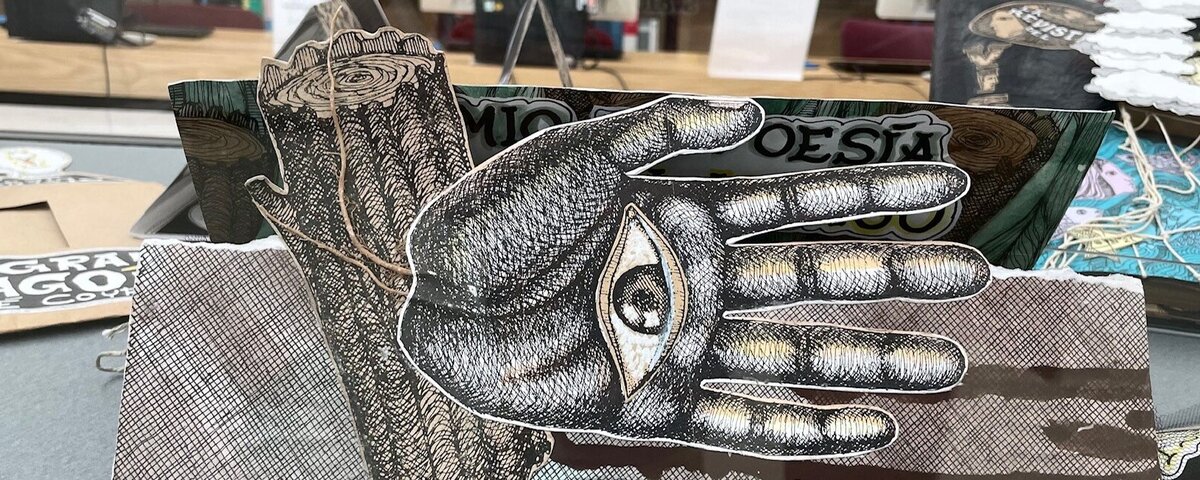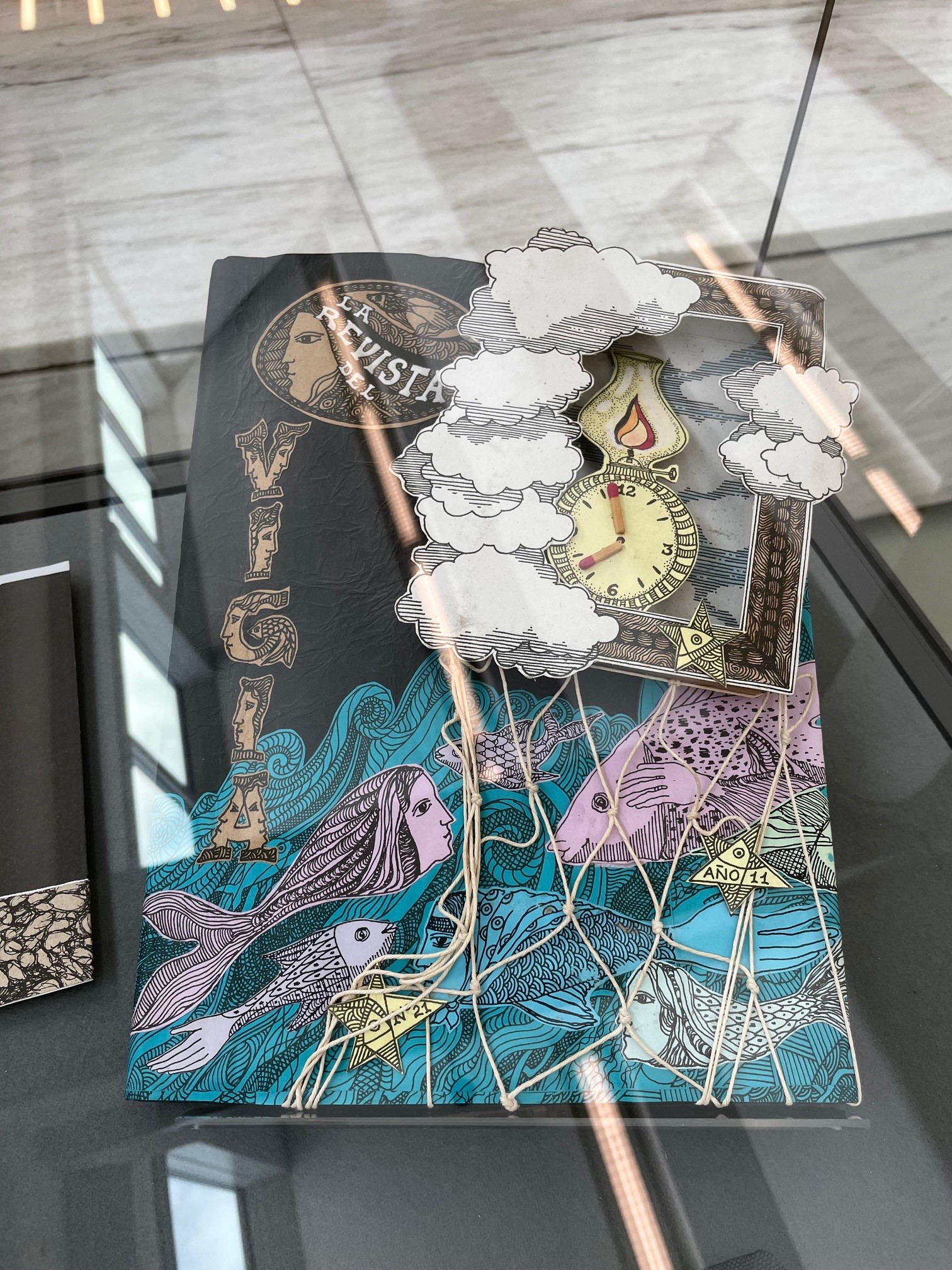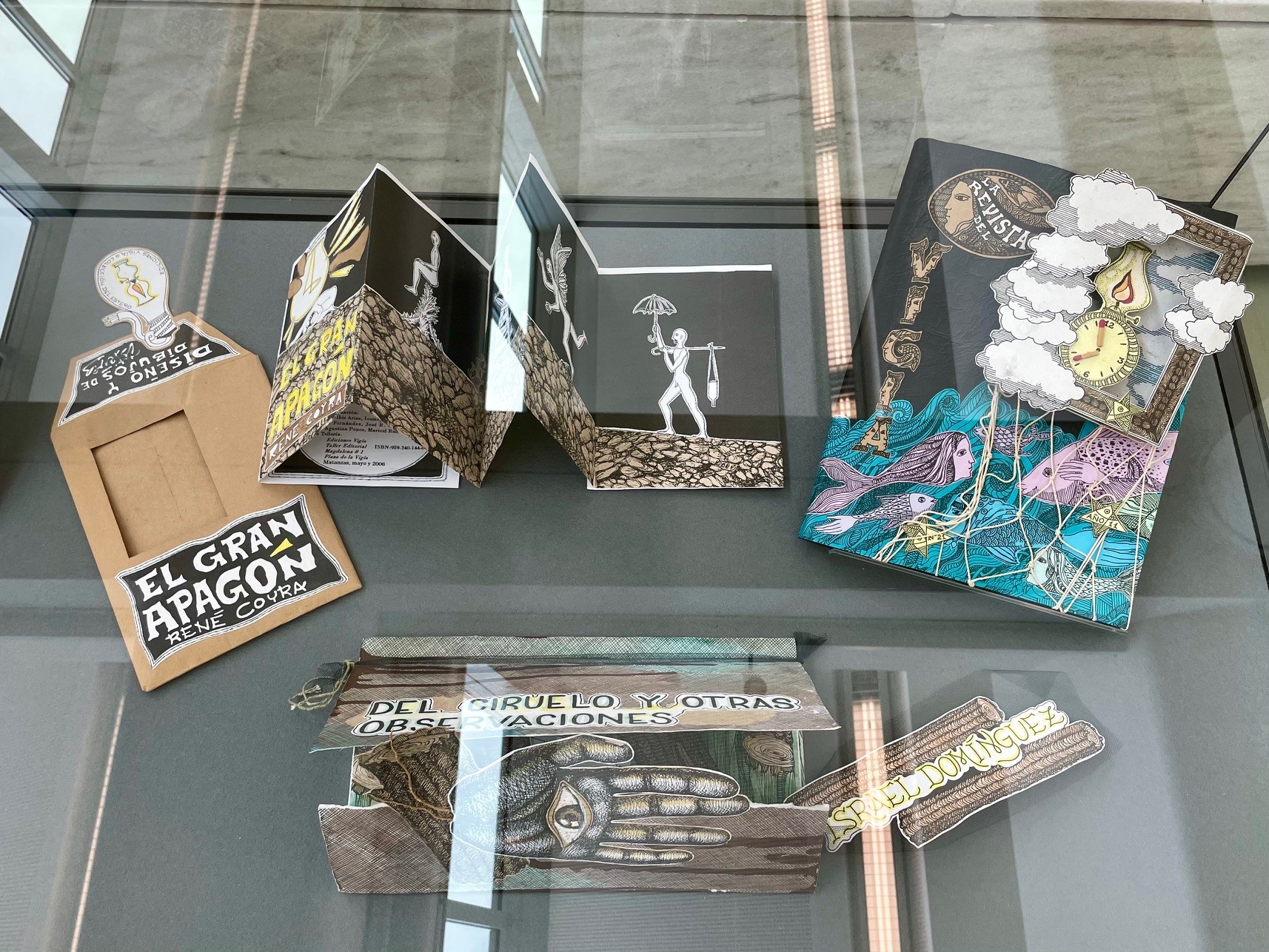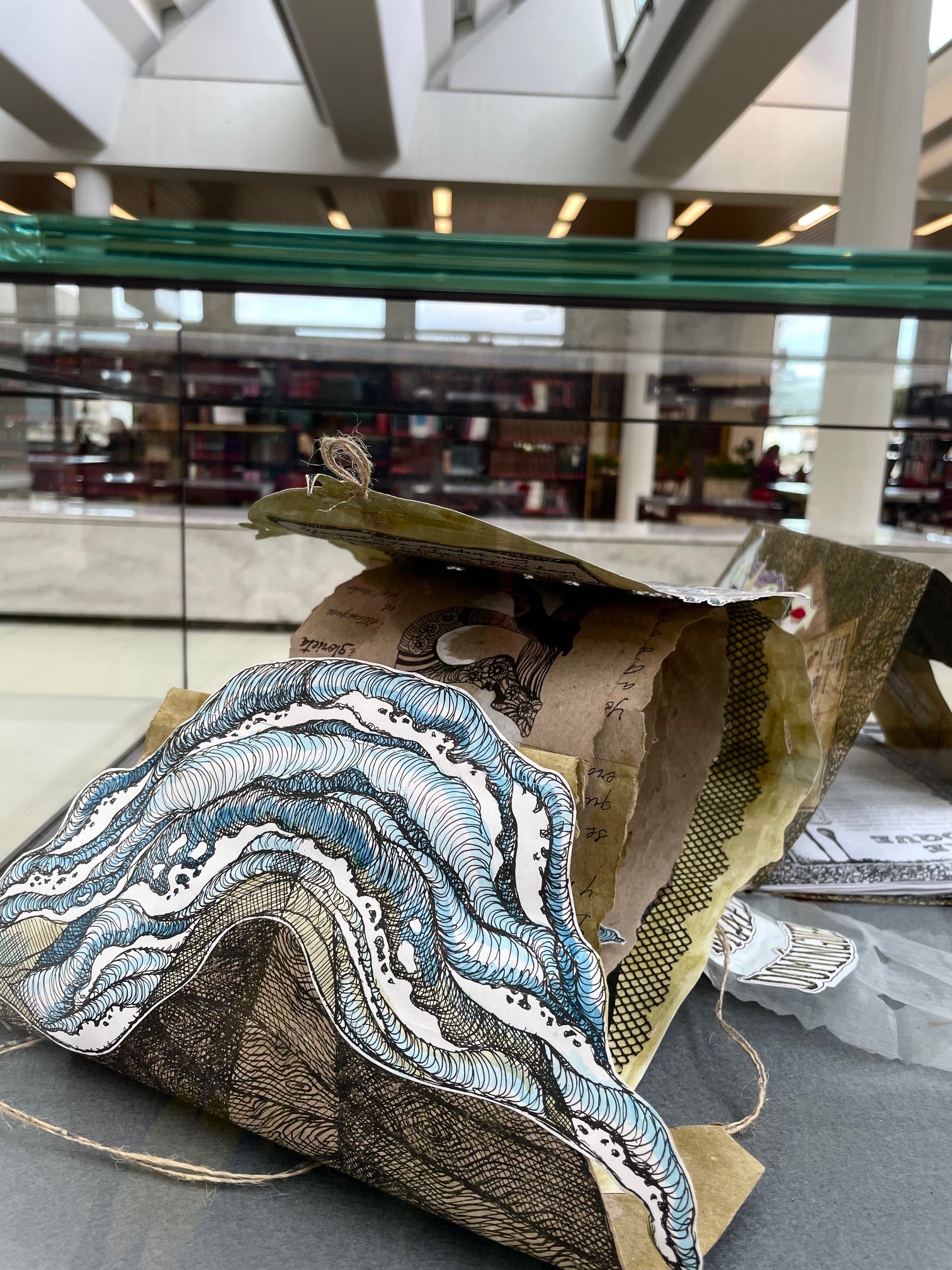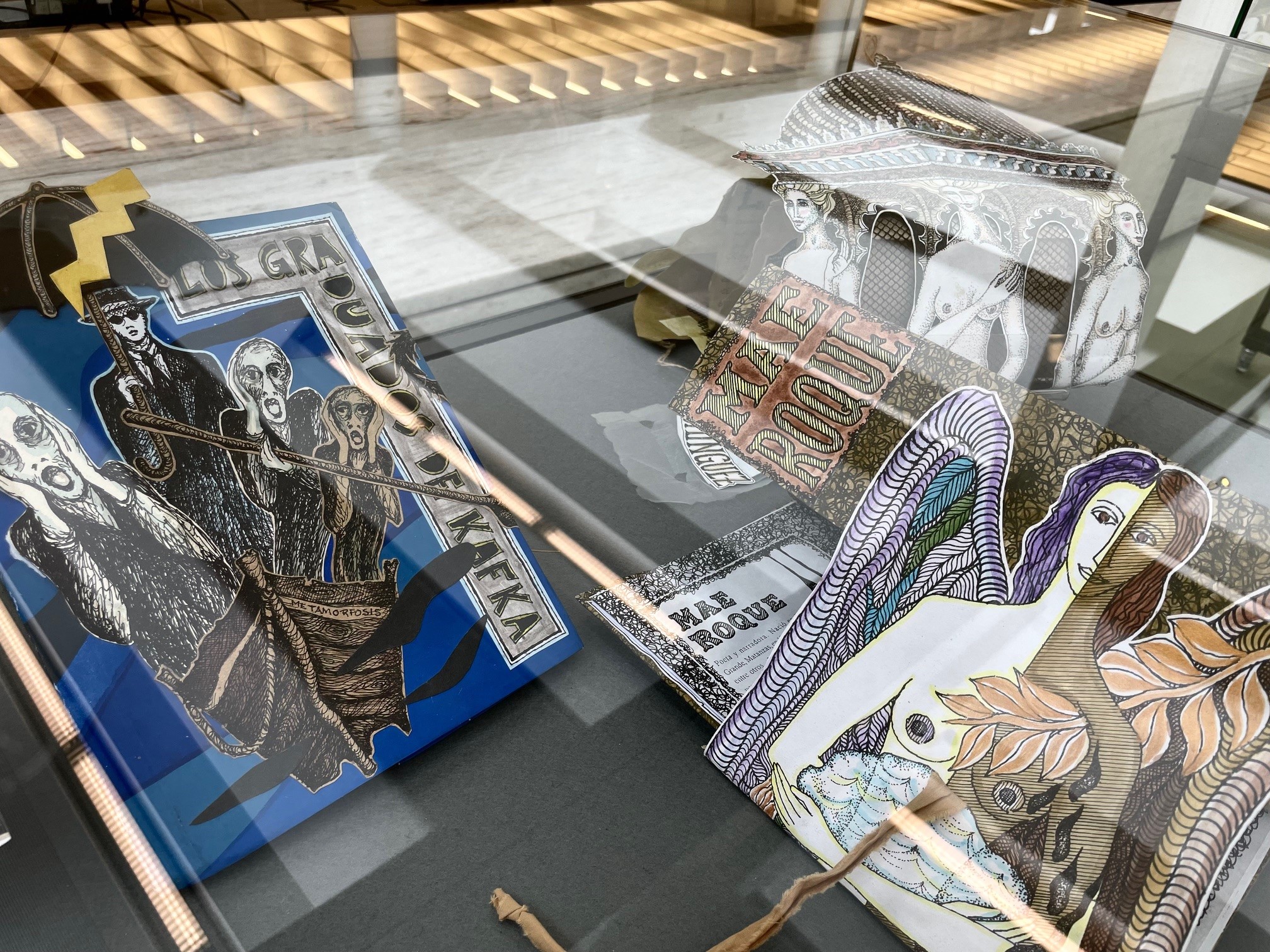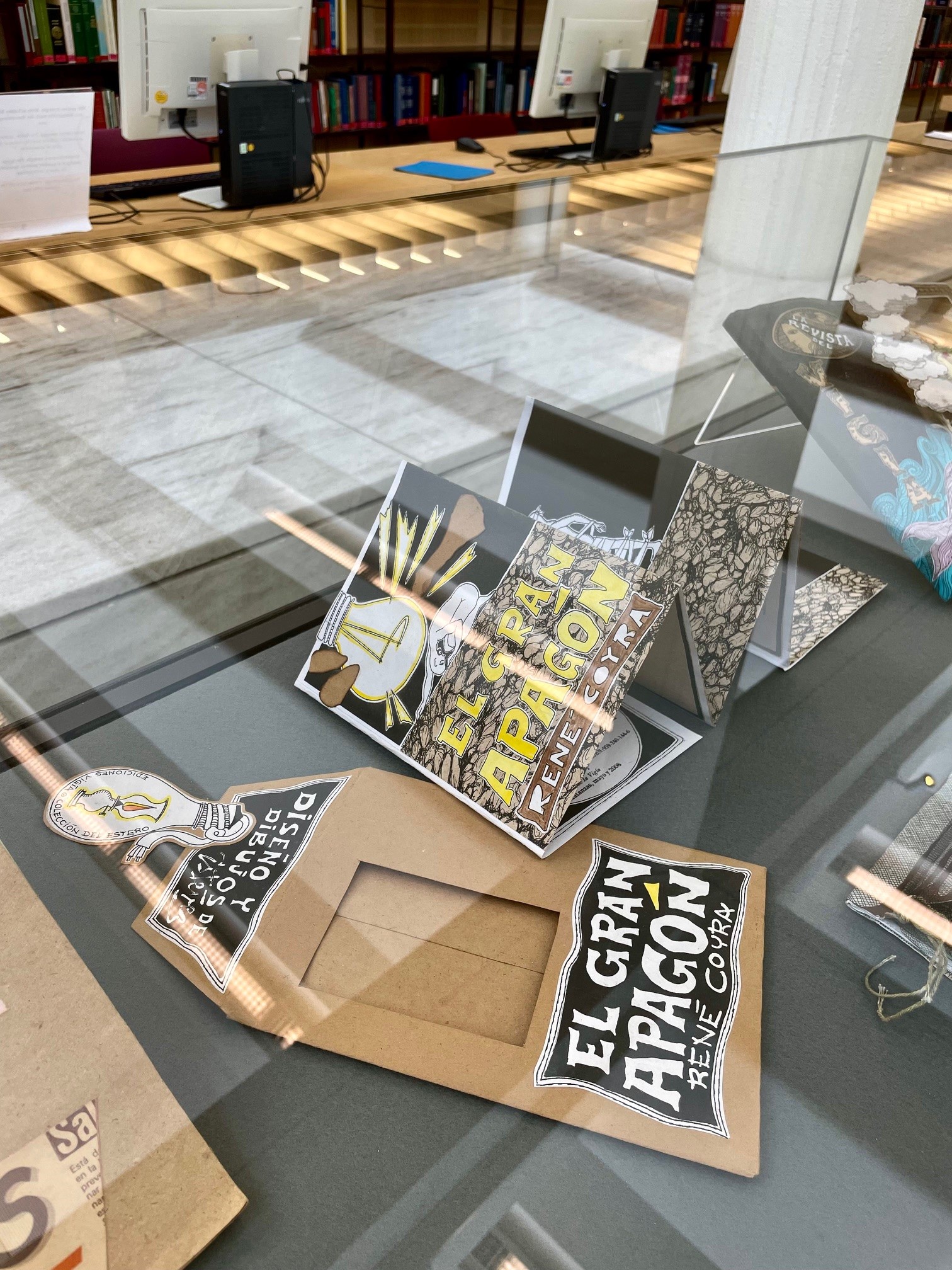The library of the Ibero-Amerikanisches Institut (IAI) holds with ist more than 300 titles the world’s largest collection of the renowned Cuban publishing house Ediciones Vigía, founded in 1985 by illustrator Rolando Estévez Jordán and writer Alfredo Zaldívar. The books of Ediciones Vigía are complex works of art based on traditional printing techniques, placing the creative process of design itself at the center of the book reception. The extraordinary interplay of text and image draws on centuries of Cuban history and tradition, reinterpreting them in light of the island’s contemporary realities and thereby contributing to the construction of a modern Cuban identity.
Butcher paper, fabric scraps and dried flowers
Vigía originally began as a meeting place for writers and artists who gathered to discuss their works. From this community emerged the first leaflets inviting participants to those gatherings. This format later evolved into an independent publishing initiative. For the production of its works, the press makes use of recycled and repurposed materials—such as butcher paper, thread, fabric scraps, leaves, dried flowers, aluminum foil, and other found objects. Each book is handmade in the workshop in Matanzas, about 100 kilometers east of Havana, resulting in unique pieces that share the same text, form, and visual motifs but may differ in artistic details. No more than 200 copies of each title are produced.
In its early years, Vigía primarily published texts and poems by little-known Cuban authors in order to increase their visibility. Although the production process has changed little since the 1980s, the press has significantly expanded its repertoire. Today, it also publishes works by internationally renowned writers such as Gabriel García Márquez, Hans Christian Andersen, Emily Dickinson, and the celebrated Cuban poet Nancy Morejón.
Creative independence
Vigía’s symbol is an oil lamp, an object that became widespread during Cuba’s so-called Período especial (Special Period), when frequent power outages made kerosene lamps essential. The endurance of Vigía over decades, despite periods of financial uncertainty, can be attributed to two main factors. First, production relies on found and donated materials—a practice with both aesthetic and ideological motivations that underscores the commitment to creative independence. Second, Vigía’s artisans and artists work on a voluntary basis, and authors receive no financial compensation for their publications.
Contributors to Ediciones Vigía enjoy international recognition for their creative use of everyday materials and for the design of unique, interactive book objects. The press’ works have been exhibited at institutions such as the Museum of Modern Art (MoMA) and the Grolier Club, a prestigious venue for book lovers in New York. Other major libraries, including the British Library in London and the Library of Congress in Washington, also feature publications by Ediciones Vigía in their collections.
The library of the IAI is showcasing a small selection of books from this extraordinary publishing house in its reading room until November 15, 2025.
